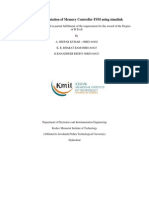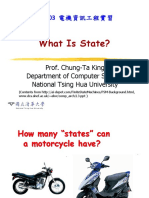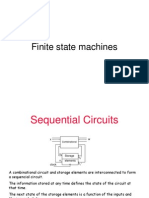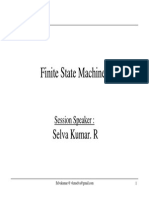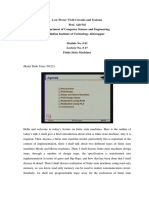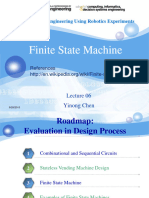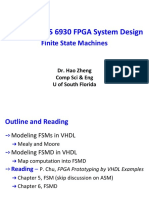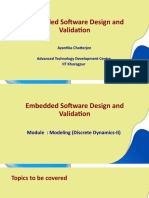0% found this document useful (0 votes)
37 views7 pagesFinite State Machine Basics
A Finite State Machine (FSM) is a computational model used to simulate sequential logic by transitioning between a fixed set of states based on inputs. It can be applied in various fields such as mathematics and artificial intelligence, with real-world examples including coin-operated turnstiles, traffic lights, and safes. Each state has defined transitions that dictate how the machine responds to inputs, ensuring only one state is active at any given time.
Uploaded by
Tibebeselasie MehariCopyright
© © All Rights Reserved
We take content rights seriously. If you suspect this is your content, claim it here.
Available Formats
Download as PDF, TXT or read online on Scribd
0% found this document useful (0 votes)
37 views7 pagesFinite State Machine Basics
A Finite State Machine (FSM) is a computational model used to simulate sequential logic by transitioning between a fixed set of states based on inputs. It can be applied in various fields such as mathematics and artificial intelligence, with real-world examples including coin-operated turnstiles, traffic lights, and safes. Each state has defined transitions that dictate how the machine responds to inputs, ensuring only one state is active at any given time.
Uploaded by
Tibebeselasie MehariCopyright
© © All Rights Reserved
We take content rights seriously. If you suspect this is your content, claim it here.
Available Formats
Download as PDF, TXT or read online on Scribd
/ 7


